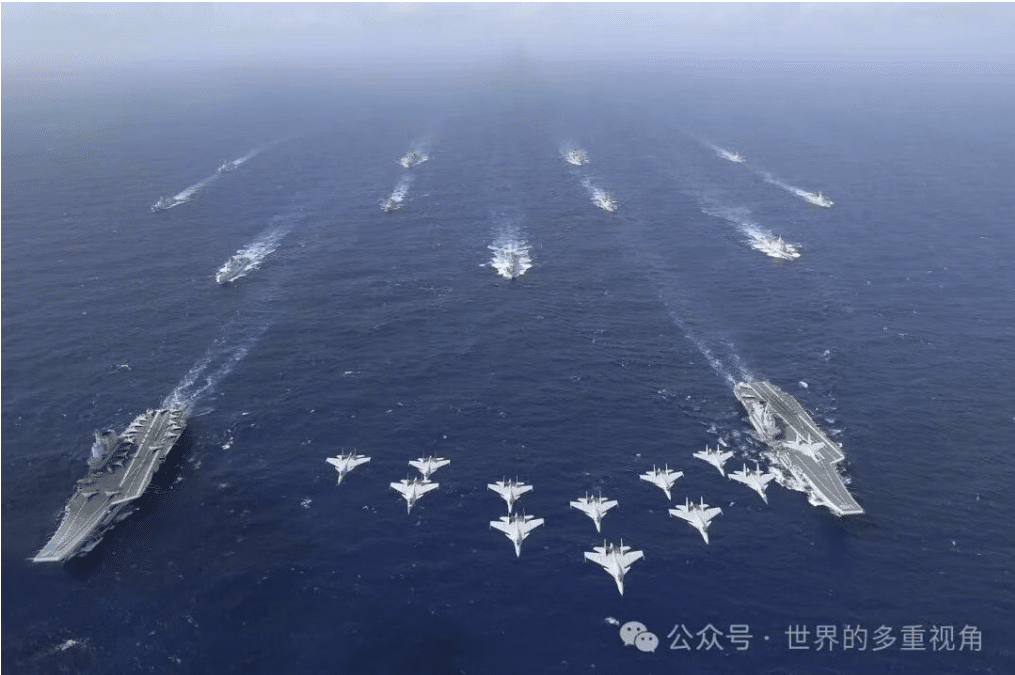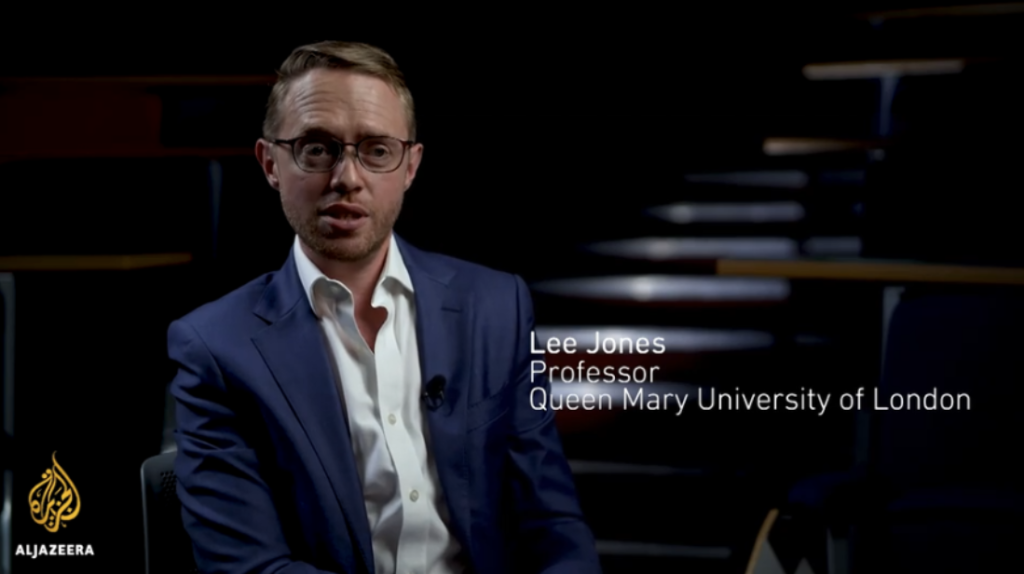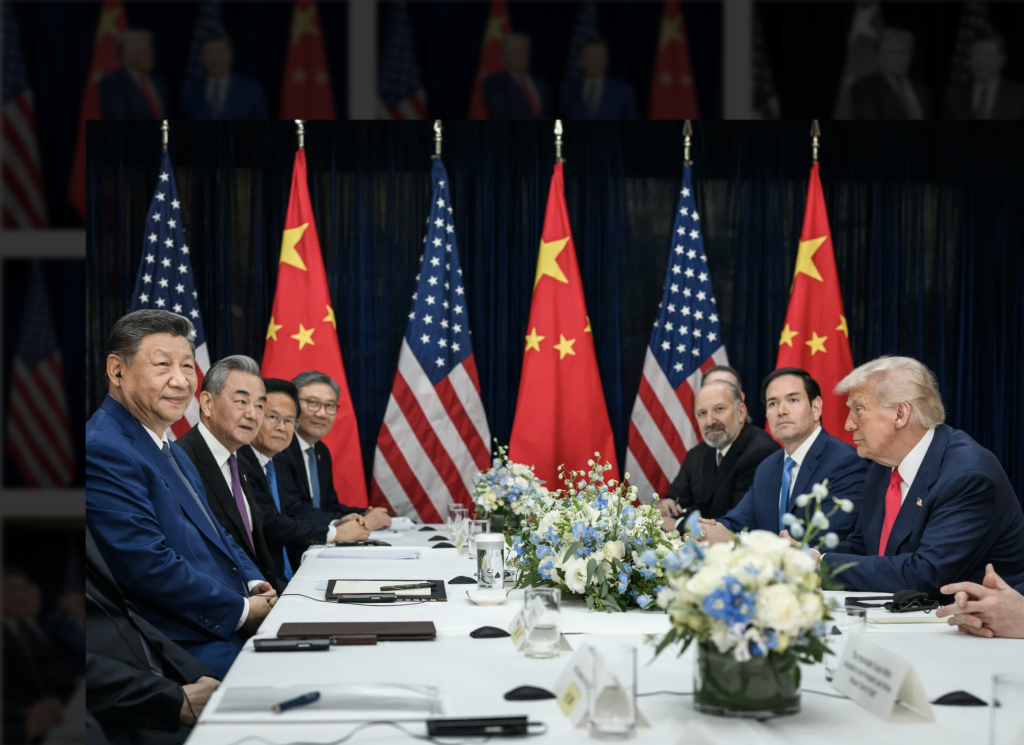How Capable Are the U.S. and Japan of Intervening in a Taiwan Conflict?
Grand Strategy and National Interests: Analyzing the Underpinnings of Sino-U.S. Strategic Competition
- Analysis
 Sabine Mokry
Sabine Mokry- 06/03/2023
- 0
Sabine Mokry is a PhD candidate at Leiden University’s Political Science Department and a visiting researcher at the German Institute of Global and Area Studies (GIGA) in Hamburg. Before pursuing her PhD full-time, she worked at the Mercator Institute for China Studies (MERICS) as a research associate focusing on China’s foreign and security policy.
The intensifying strategic competition between the U.S. and the People’s Republic of China (PRC) permeates almost all aspects of world politics. To grasp the underpinnings of Sino-U.S. great power competition, I analyzed a broad sample of Chinese and U.S. foreign policy statements stretching across different policy-making levels and covering different foreign policy actors within both governments in a recent article published in International Politics.
The article reveals important differences in emphasis between the U.S. and China, significant changes over time, and pronounced discrepancies between policy levels and foreign policy actors. Most importantly, it shows that the Chinese government seeks to play a more prominent role internationally, whereas the U.S. government is increasingly concerned about the country’s security and economic standing. In many instances, U.S. and Chinese grand strategies mirror each other. Most recently, the competition between political systems and associated values has gained traction, first on the Chinese side, then the U.S. While there is more divergence between policy levels in the U.S., there are still discrepancies between the strategic and policy planning level in the PRC’s highly centralized authoritarian system. Moreover, in the U.S., disagreements between foreign policy actors have centered around promoting the country’s values internationally. However, in China, most differences appeared regarding territorial defense.
To identify the different components of a country’s national interest, I link Donald E. Nuechterlein‘s influential conception of the national interest to recent empirical investigations into China’s national interests. First, defending its territory, political system, and citizens are in a country’s interest (in Figure 1 below, this is expressed as ‘Def’). Nuechterlein describes ‘defence interests’ as ‘the protection of the nation-state and its citizens against the threat of physical violence directed from another state and/or externally inspired threat to its system of government’. Second, expanding its external economic relations is in a country’s interest (‘Econ’). Nuechterlein describes economic interests as ‘the enhancement of the nation-state’s well-being in relations with other states’. Third, leading global governance is also in a country’s interest (‘Gov’). Under ‘world order,’ Nuechterlein discusses the ‘maintenance of a political and economic system in which the nation-state may feel secure, and its citizens and commerce may operate peacefully outside its borders’. Fourth, like the third, promoting its values is also in a country’s interest (‘Val’). For Nuechterlein, ideological interests refer to ‘the protection and furtherance of a set of values which the people of a nation-state share and believe to be universally good’. Reviews of the literature on China’s foreign policy suggest that Nuechterlein overlooks regional order and the provision of global public goods. Hence, I added two additional components to my conceptualization: Fifth, that it is in a country’s interest to establish itself as the leading power in the region (Reg) it is situated in. Sixth, I consider offering global public goods (‘Publ’) also as in a country’s interest.
In the paper, through quantitative computer-assisted content analysis, I compare official foreign policy statements from the U.S. and China, including strategic guidelines, policy papers, and speeches in front of international and domestic audiences. I distinguish the strategic from the policy planning level. Outlining broad and long-term directions, foreign policy statements at the strategic level are the most authoritative. In the Chinese context, this applies to the Political Work Report to Party Congress and other statements by the Chinese Communist Party (CCP) General Secretary or State President. In the U.S., this applies to statements from the President and the National Security Strategy. Statements on the policy planning level describe more focused communication related to a particular context. This level covers speeches by ministers or cabinet members tasked with foreign policy issues and policy papers on specific topics. In the Chinese context, the policy planning level covers speeches by the Premier and Foreign Minister and policy papers issued by the State Council Information Office (SCIO). In the U.S., this level covers the Vice President and the Secretaries of State and Defense. The timeframe of this research starts right after the global financial crisis of 2008 and ends after the first waves of the COVID-19 pandemic in June 2022.
Differences in emphasis in the construction of the national interest
The Chinese and U.S. governments emphasize different aspects when they construct their countries’ national interest. Most importantly, the U.S. government emphasizes the components of the national interest defend the territory, political system, and citizens and expand economic relations, while the Chinese government puts much more emphasis on offer global public goods and lead global governance, as Fig. 1 illustrates. While both governments put roughly the same limited emphasis on promote the country’s values, the Chinese government emphasizes control the region slightly more than the U.S. For both, it is the least prominent component of the construction of the national interest.

From the relative salience of the different components of the construction of the national interest in the U.S. and Chinese foreign policy statements, several inferences about the countries’ grand strategies and Sino-U.S. great power competition can be drawn. From the Chinese government’s focus on offer global public goods and lead global governance, one can infer that it seeks to play a more prominent role internationally. The U.S., in contrast, voices much less pronounced ambitions in these areas, either because it is already considered the hegemon or because its ambitions for global leadership dwindled. The U.S. government’s increasing concerns about its security and economic standing, visible through its focus on defending its territory, political system, and citizens, and promote its external economic relations, support the latter assessment. Both governments put a similar emphasis on promoting the country’s values internationally. Crucially, the ambitions expressed in this area pale in comparison with the other components of the national interest. Hence, the ideological confrontation did not play out openly in the analyzed time period.
Shifts in emphasis over time in the construction of the national interest
During this period, there were significant differences in how much emphasis the Chinese and U.S. governments put on the different components of the construction of the national interest, as illustrated by Figs. 2 and 3. In Chinese foreign policy statements, lead global governance became more important. Then, while it quickly gained and lost importance between 2008 and 2011, its relative salience increased constantly after 2011. In 2018, it became the most salient component of the construction of China’s national interest, replacing offer global public goods. Control the region was mostly the least salient component of the construction of China’s national interest, except for a short-lived peak in emphasis between 2012 and 2014, when it was more important than expand China’s economic relations and promote China’s values. Expand China’s economic relations became more important over time, albeit with frequent shifts in its relative salience. Promote China’s values was the second least salient component of the construction of the national interest. A drop immediately followed a brief peak in emphasis in 2010. After 2013, it gained prominence again. There were frequent shifts in the importance attributed to defend China’s territory, political system, and citizens. The Chinese government’s increased emphasis on lead global governance suggests that it seeks to take on a leadership role in international politics. After an initial push for leadership in the region, the Chinese government quickly toned down these ambitions. While ideology became slightly more important after Xi Jinping took office, its overall importance remains limited.

In contrast to the patterns observed in the Chinese government’s pronouncements, lead global governance and offer global public goods constantly lost importance in U.S. foreign policy statements. Usually, they ranked as the third and fourth most salient components respectively. Instead, the U.S. government put much more emphasis on defend its territory, political system, and citizens and on expand its economic relations. The former became particularly salient between 2019 and 2021. Control the region was, for the most part, the least salient component of the construction of the national interest. However, there were spikes in emphasis between 2011 and 2013, and between 2015 and 2017. Promoting the country’s values was the second least salient construction of the U.S. national interest throughout the analyzed time frame. However, the first spike in emphasis in 2017 was followed by another even more pronounced one in 2019. After 2020, promote U.S. values became more important, while still modest, compared to the other components of the construction of the national interest. Notably, this trend started under the Trump administration and continued under Biden. The U.S. government focused less on leading international institutions. This trend was only somewhat reversed at the beginning of the Biden administration.

In direct comparison, shifts in relative salience in the components constructing national interest lead global governance and control the region in Chinese and U.S. foreign policy statements were most interesting. Between 2010 and 2012, the U.S. and Chinese governments paid roughly the same attention to lead global governance. Afterward, the Chinese government constantly increased its emphasis, while the U.S. government’s focus on this component decreased. Regarding control the region, between 2011 and 2013, there was a spike in emphasis in U.S. foreign policy statements. This spike was immediately followed by a peak in interest in those of the Chinese. Between 2015 and 2017, and between 2018 and 2020, the pattern repeated itself, albeit to a slightly lesser degree. The more pronounced peak in emphasis in Chinese foreign policy statements between 2018 and 2020 was mirrored between 2020 and 2022 in U.S. statements. Hence, the emphasis both governments attach to the Asia–Pacific is heavily influenced by the emphasis the other government attributes to the region.
The divergence between policy‑making levels
In both countries, there was a substantial divergence between foreign policy statements issued at the strategic and policy planning levels, as Fig. 4 shows. In Chinese foreign policy statements, the highest degree of divergence between the strategic and the policy planning level manifested in 2008. Afterward, there was a rapid decrease in divergence. The divergence between policy levels was very small in 2009, 2014, between 2016 and 2017 and between 2020 and 2021. In U.S. foreign policy statements, the highest divergence appeared in 2020. Between 2011 and 2014, the degree of divergence between policy-making levels was fairly constant and at a similar level as in Chinese foreign policy statements. Between 2016 and 2021, there were pronounced shifts in the degree of divergence: In 2017 and 2020, the degree of divergence was fairly high; in 2019 and 2021, it was comparatively low. In direct comparison, the overall degree of divergence between policy-making levels was higher in the U.S. than in Chinese statements. For both countries, the degree of divergence between policy-making levels fluctuated with no clear trends emerging. It is hardly surprising that there was more divergence between policy levels in the U.S. democratic system compared to the Chinese authoritarian system. However, differences between the two countries were not as big as expected: Even in the PRC’s highly centralized authoritarian system, discrepancies between the strategic and the policy planning level were uncovered. When Xi Jinping took power, these differences were particularly pronounced. Under his rule, the divergence between policy-making levels decreased, albeit not constantly. In 2018 and 2019, for instance, there was again significant divergence between the strategic and policy planning level. In the U.S., the degree of divergence between policy-making levels coincided with the different administrations. During the Trump administration, there were more differences between the strategic and policy planning level than under Obama or Biden. The identified divergences between policy levels hint at inconsistencies in great powers’ grand strategies. The next section will investigate these discrepancies by examining divergences between foreign policy actors within both governments.

The divergence between actors within the state
Pronounced discrepancies appeared between Chinese foreign policy actors. The divergence between the CCP General Secretary, or State President, and other actors was the lowest. The degree of divergence between the State Council Information Office and other actors was highest, followed by the Foreign Minister. For defend China’s territory, political system, and citizens, discrepancies between Chinese foreign policy actors were particularly pronounced. Between
the CCP General Secretary, or State President’s, and other actors’ statements, the most pronounced differences appeared in control the region. Between the Premier and other actors’ statements, pronounced differences first appeared in offer global public goods, then mainly regarding lead global governance. The State Council Information Office’s statements showed big discrepancies in expand China’s economic relations compared to statements from other actors. The analysis shows that the General CCP Secretary or State President disproportionately influences the construction of China’s national interest. Other foreign policy actors tend to follow his lead. However, noteworthy differing views regarding the importance of defend China’s territory, political system, and citizens, control the region, and lead global governance appeared between him and the other actors.
In the U.S., the highest degree of divergence appeared between the Vice-President and other foreign policy actors. The smallest degree of divergence featured between the Secretary of State and other foreign policy actors. There were also big differences between the Secretary of Defense and other foreign policy actors, especially regarding promoting U.S. values. After 2016, particularly around 2019, discrepancies between the U.S. President and other foreign policy actors increased significantly. Around 2016, discrepancies covered all components of the construction of the national interest. Then, around 2019, discrepancies were most pronounced for defend the country’s territory, political system, and citizens, expand its economic relations, and promote the country’s values. In the U.S., the State Department seems to take the lead, while other actors follow. Differences between the U.S. President and other actors appeared during the Trump administration, especially toward the end.
The analysis showed that different foreign policy actors put different degrees of emphasis on the different components of the construction of the national interest. The divergences between foreign policy actors reflect differing positions and substantial debate behind the formation of grand strategies. On the Chinese side, the divergence between foreign policy actors encompasses almost all components of the construction of China’s national interest, except promote China’s values. In the U.S., the divergence between foreign policy actors centers around exactly these components of the construction of the national interest.
Policy implications
My research showed that a long-term perspective is needed to uncover the underpinnings of great power competitions. The identified differences within both governments suggest that researchers and policy-makers must listen to different foreign policy actors, even under centralized authoritarian rule. Bringing in the substance of the construction of the national interest on both sides gives indications about the underpinnings of Sino-U.S. strategic competition. It shows how coherent the construction of the national interest is on both sides and where there might be clashes between the two sides.







